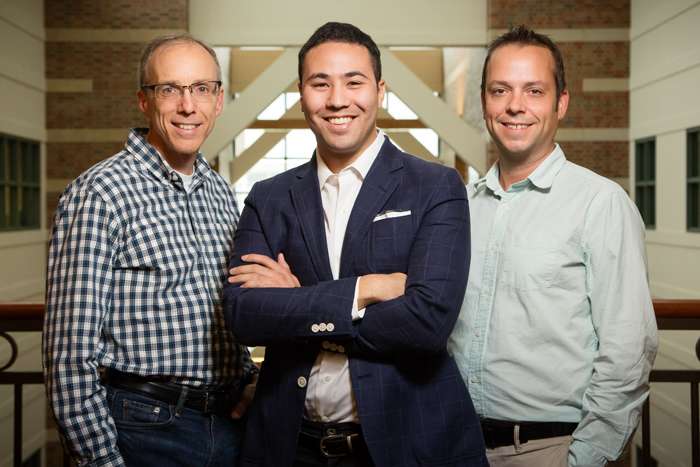New synthetic tumor environments make cancer research more realistic

Tumors are notoriously difficult to study in their natural habitat – body tissues – but a new synthetic tissue environment may give cancer researchers the next-best look at tumor growth and behavior.
University of Illinois researchers have developed a new technique to create a cell habitat of squishy fluids, called hydrogels, which can realistically and quickly recreate microenvironments found across biology.
To illustrate the potential of their technique, the Illinois team mixed breast cancer cells and cells called macrophages that signal cancer cells to spread and grow into a tumor. They were able to observe how differently cells act in the three-dimensional, gel-like environment, which is much more like body tissues than the current research standard: a flat, hard plastic plate.
Led by materials science and engineering professor Kristopher Kilian, chemistry professor Jeffrey Moore and graduate student Joshua Grolman, the team published its results in the journal Advanced Materials.
Kilian said his team's synthetic microenvironment lies somewhere in the middle of two extremes in the field of modeling biology: the hard plastic plate, and expensive mouse avatars that are created by injecting human tumor cells into mice.
"This is really the first time that it's been demonstrated that you can use a rapid methodology like this to spatially define cancer cells and macrophages," Kilian said. "That's important, because once you have that architecture, then you can ask fundamental biological questions."
Kilian said these questions range from the basic – how macrophages signal to the breast cells – to the more long-term: Can therapeutics be used to disrupt that communication?
What sets the team's model apart from mouse avatars and hard plastic plates is that it can replicate much more accurately the sizes and shapes of the microenvironment within the patient's problem area. The materials that pharmaceutical companies use to test drugs' effects on cells don't allow for three-dimensional vascularization, a network of capillaries that carry drugs and other materials throughout the body. The team's model does, creating networks that go from straight, to snakelike, to any shape.
"Now, researchers can ask more sophisticated biological questions than they could," Kilian said.
And they can do it quickly. The process the team came up with to produce the synthetic environments takes an estimated 15 minutes, discounting the time it takes to grow the cells and a few other steps, Grolman said.
Grolman described it as a tool that could not only help inform science, but also aid in drug screening.
"The microenvironment actually has a significant effect on how the cells respond to a drug," Grolman said. "These companies might have the next big drug, but they might not know it."
"The long-term vision would be: A patient goes in and finds out they've been diagnosed with some sort of solid tumor," Kilian said. "You take a biopsy of those cells, you put it into this device, grow them and see how they respond to different treatments."
More information: "Rapid 3D Extrusion of Synthetic Tumor Microenvironments." Adv. Mater.. DOI: 10.1002/adma.201501729
Journal information: Advanced Materials
Provided by University of Illinois at Urbana-Champaign





















